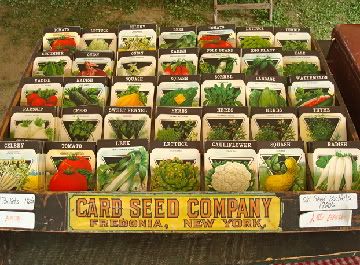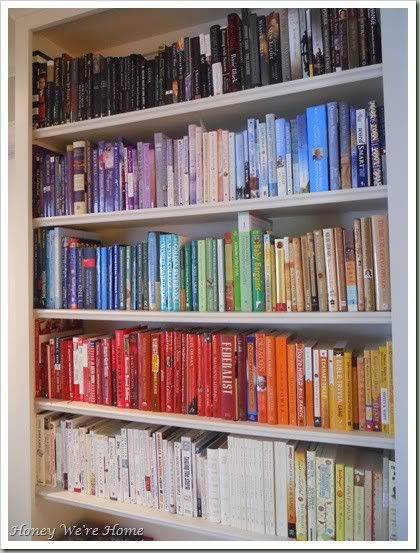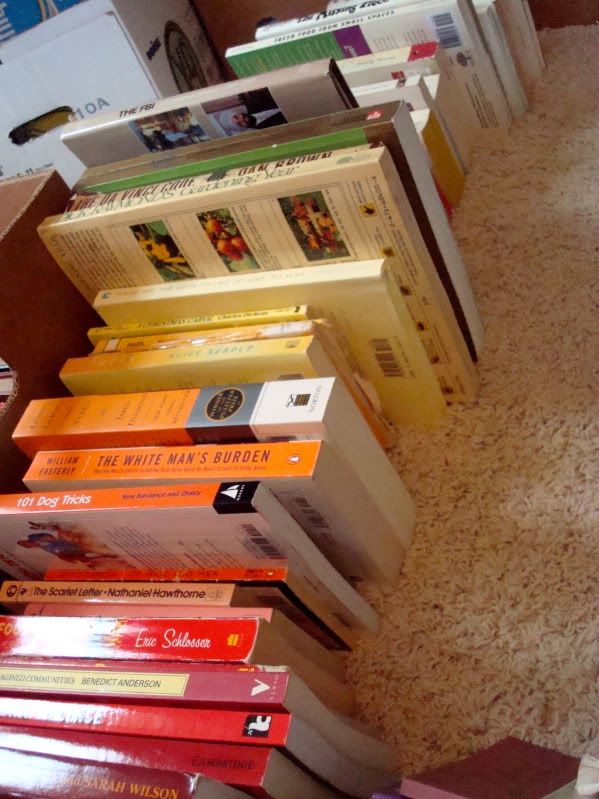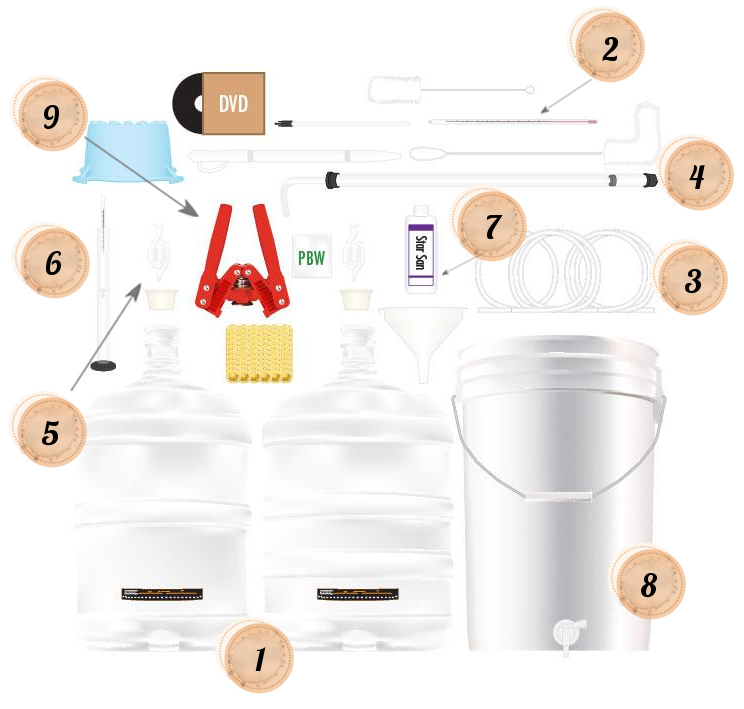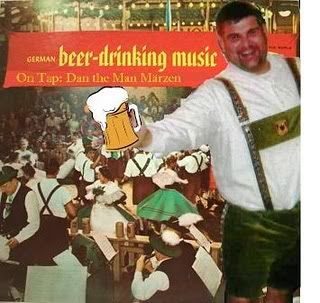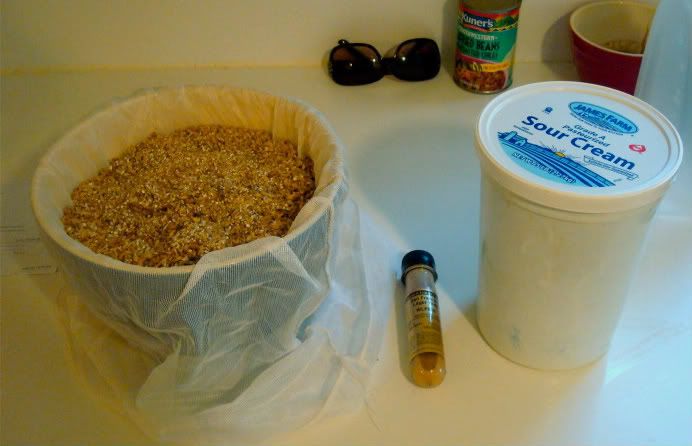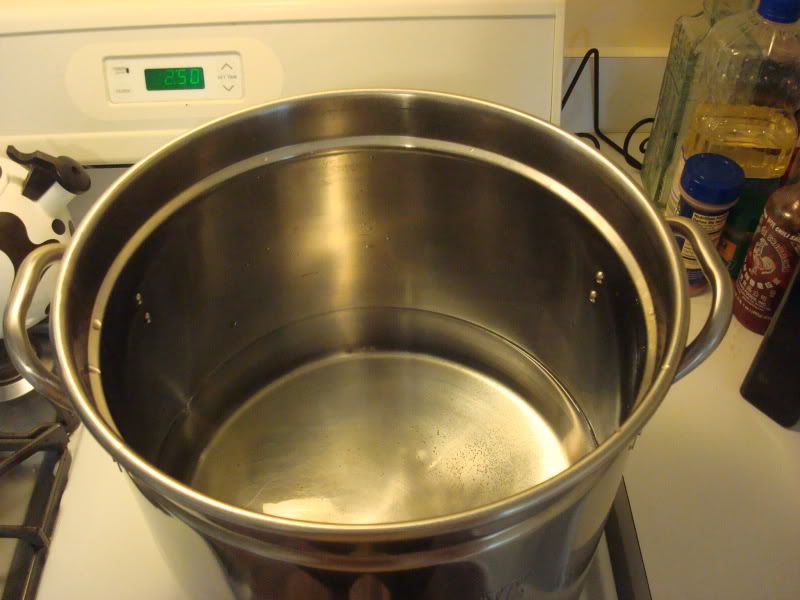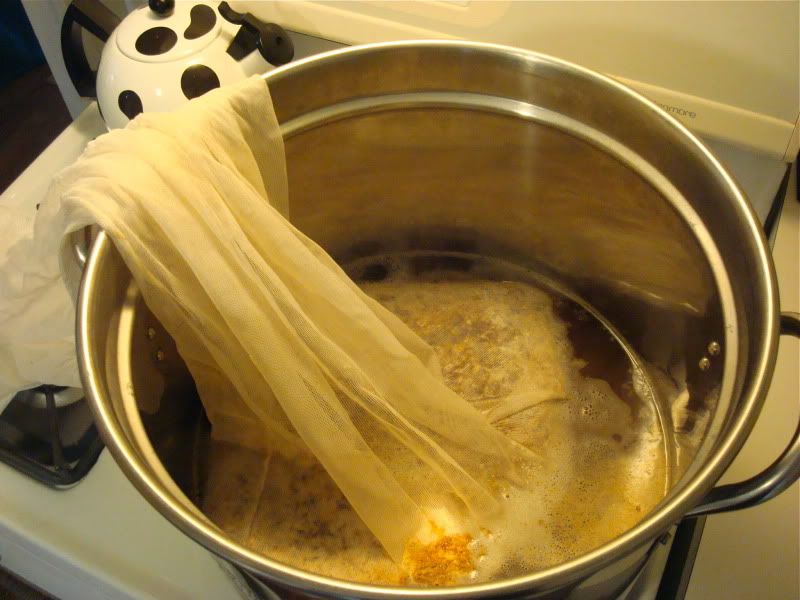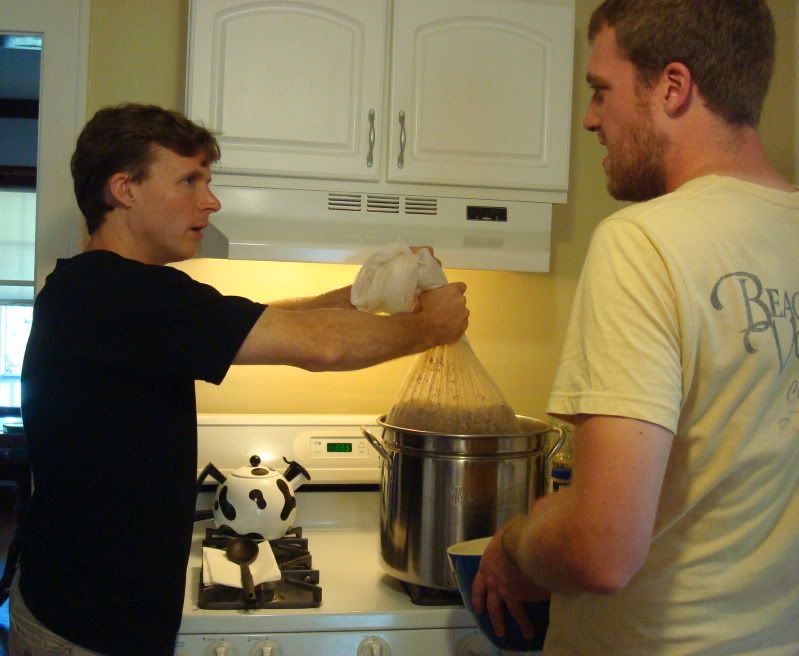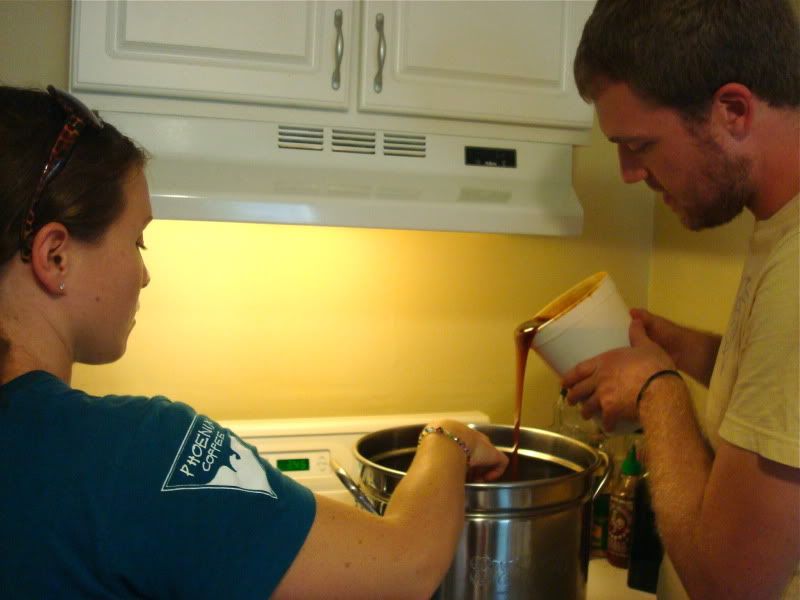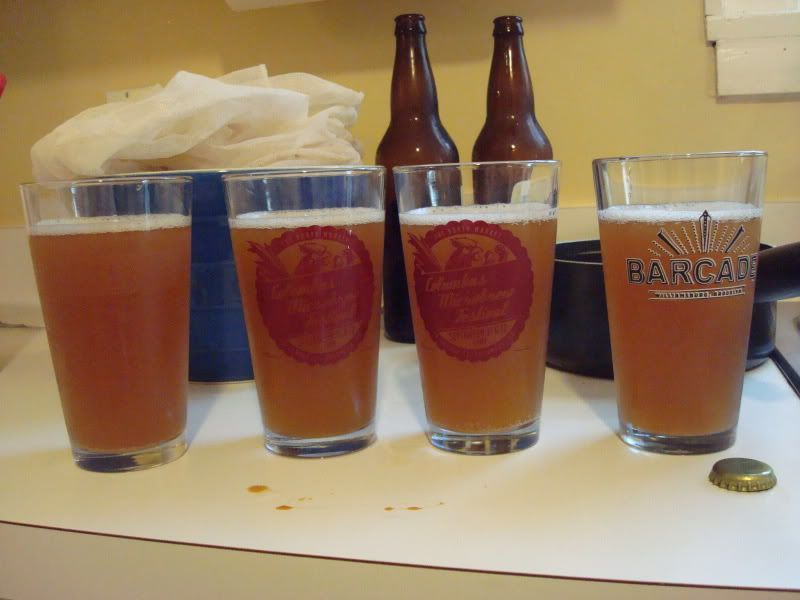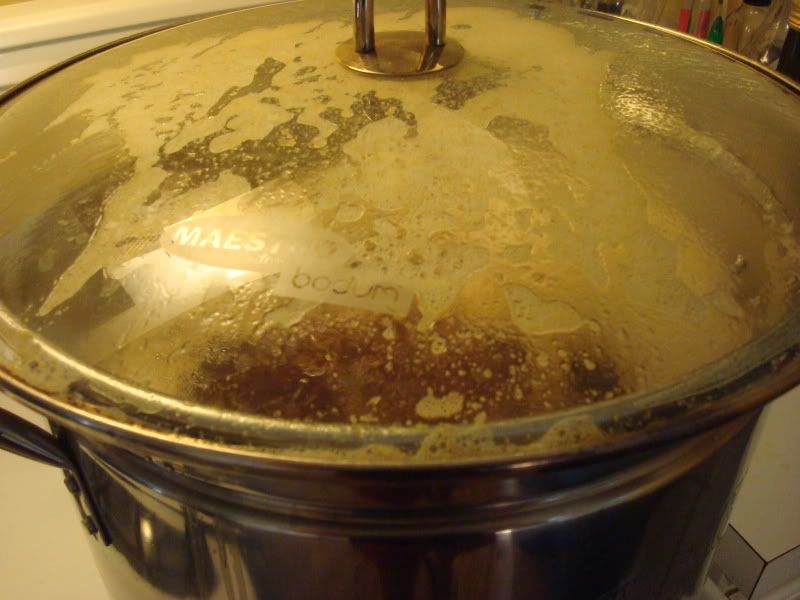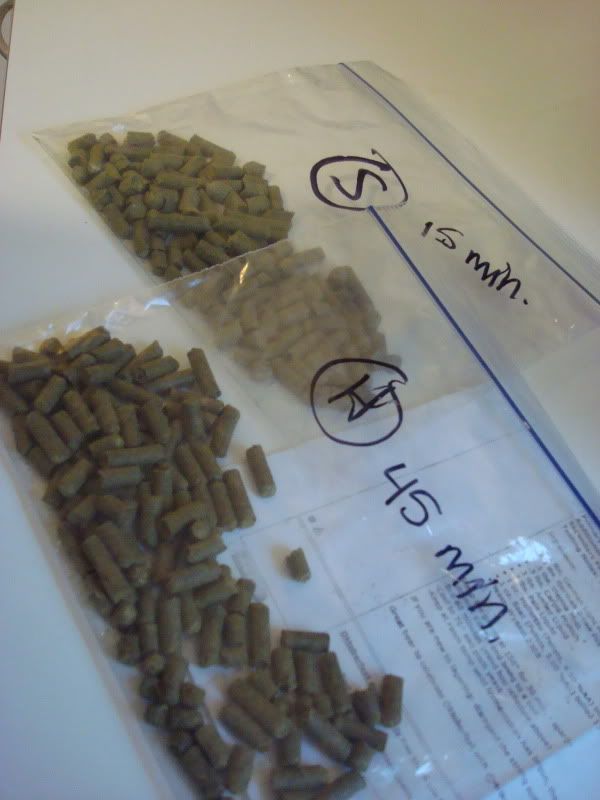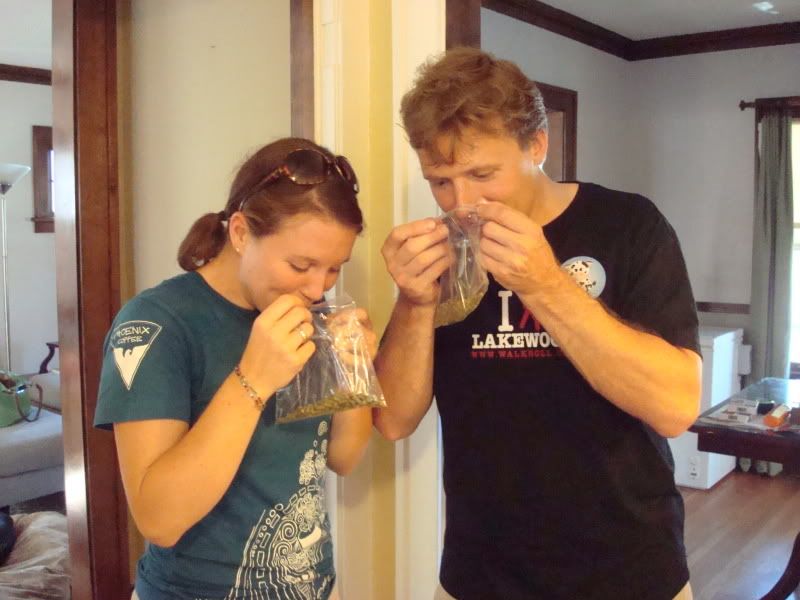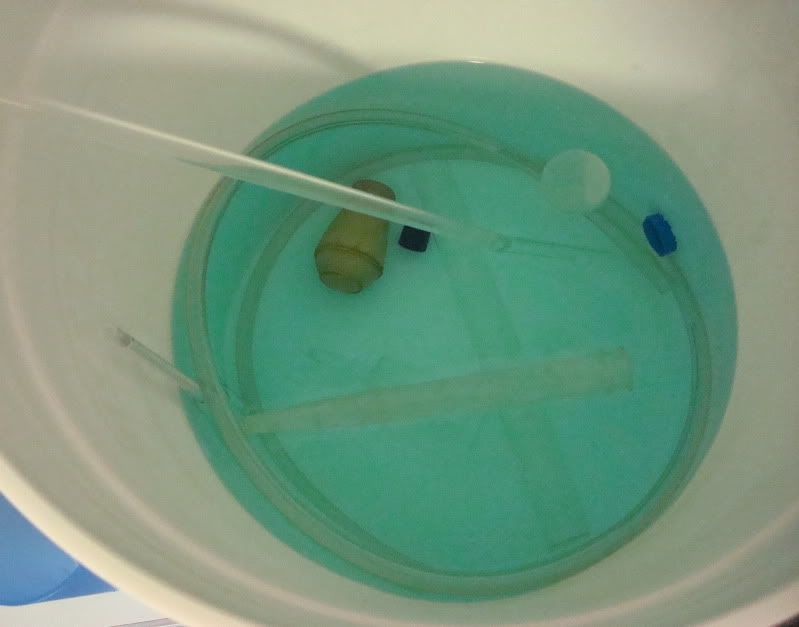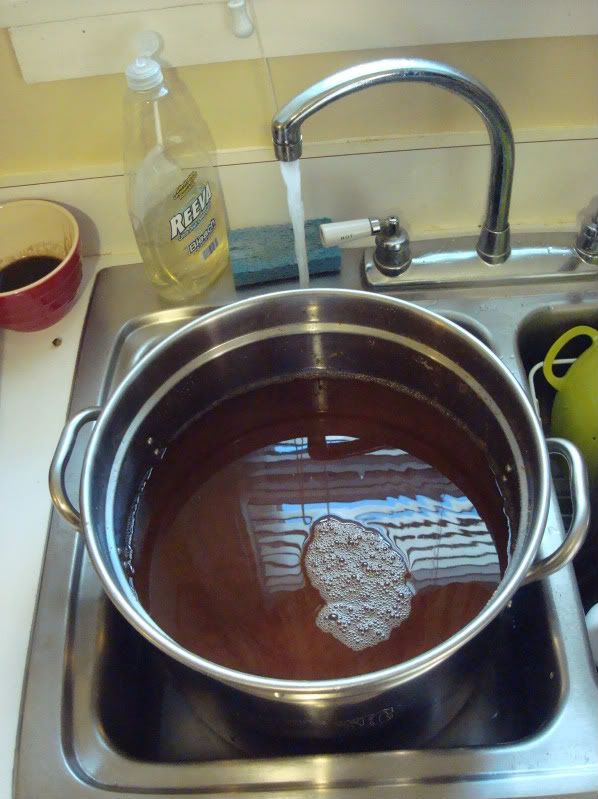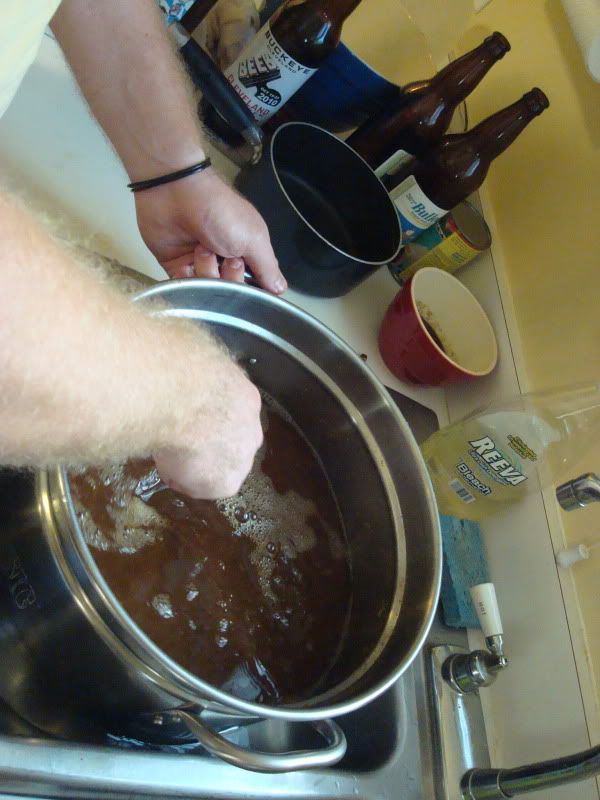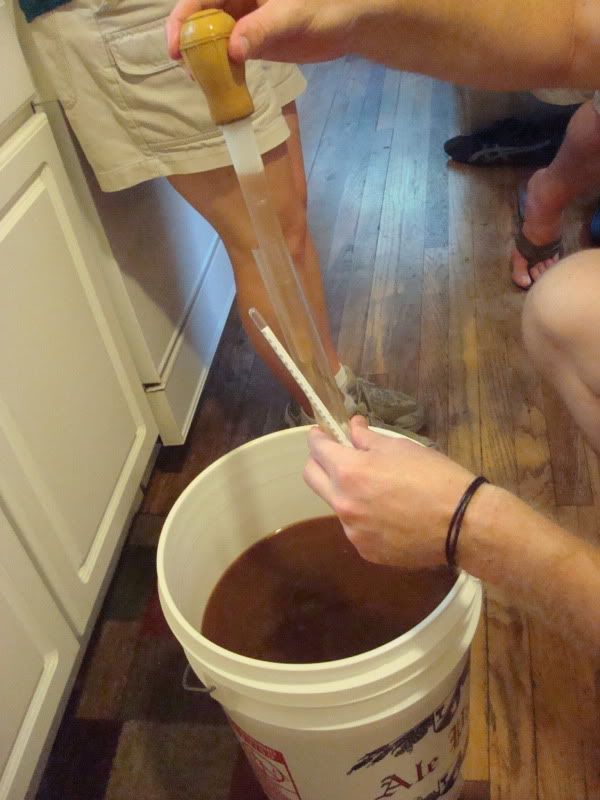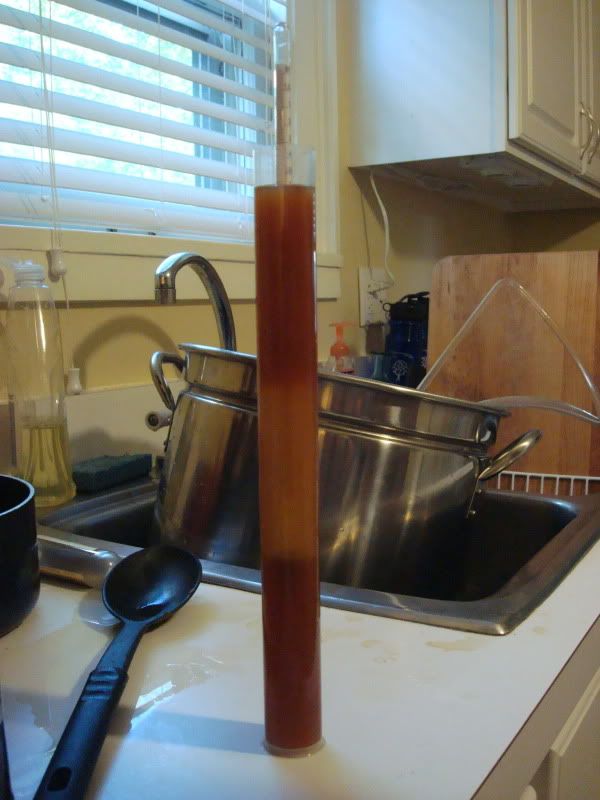0
Antiques Roadshow
Posted by Corrie
on
11:15 PM
in
Decor
This isn't your standard doing-things-around-the-house post, but I wanted to share with you a little adventure I went on last weekend that resulted in a couple of fun finds for the house. This past Saturday, I made the drive out to Burton, OH, picking up my mom along the way, for the Burton Antiques Festival. Perhaps you could call it my own little Antiques Roadshow adventure (more like 'Antiques Roadtrip'...or maybe 'Antiques Fair-show'...eh, you get the point). Do you guys ever watch that show? I feel like a lot of people have but are embarrassed to admit it, like it's something only people 60+ years old would watch. Well, I'm not afraid to admit that Darren and I both watch it on occasion and appreciate it. I mean, really. There's some crazy ish that can go down on that show. Side note - did you know there's an Antiques Roadshow computer game? I'm not exactly sure I understand how it works, but the fact that it exists makes me laugh.
Enough of my random tangents, let's get to the goods.
The Burton Antiques Festival is held outdoors at the Geauga County fairground twice a year - one Saturday in June and one Saturday in September. There are about 400 vendors that attend and it's only $6 to get in (with free parking). My mom has been going for years with a friend from Pennsylvania, but I always seem to either find out about it last minute or have conflicting plans. This time, I got the September date from her after the June show and marked it on my calendar to make sure I wouldn't miss it. And believe me, if you are at all interested in antiques or turning old things into new, you NEED to check out this festival. There is literally something for everyone. From 19th century farmhouse items to Art Deco decor to vintage toys to antique hardware to furniture...the list goes on. You'll feel the need to stop and look at every. single. thing. from every. single. vendor., but if you do, you'll be there the whole day and there will be about a 99% chance that anything you thought "oh, I'll come back for that later" will be gone. In the time I saw a fireplace ash bucket and turned to my mom to say, "That might make for great wood storage in front of my fireplace," some girl had picked it up before I could even get to the word "wood." Since the whole experience was a fun adventure, I thought I would share the things I picked up, along with some interesting-but-not-worth-spending-the-money-on finds. So if you only care about that latter, you might want to scroll down a bit.
I walked into the festival with a list of items I was hoping to find for the house/future projects, so that helped me stay a bit focused. Some of those things were: old soda crates to hang as shelves, some sort of wooden or wire bins for floor storage in the future pantry, an old desk or vanity to replace my dresser in our bedroom, and a kitchen scale. I was also hoping to scope out some old coffee grinders and vintage fans, even though I didn't really plan on buying them that day. Just kind of price checking for future bartering purposes, ya know?
A number of vendors were selling soda crates, and I ended up grabbing an old Pepsi one for about $10, which was low to average for what vendors were asking. I also quickly noticed these really cool, wooden, compartmentalized containers, some of which were described as knife trays, that a lot of vendors were selling. I thought they would be a great storage 'centerpiece' for our coffee table, where we could put remotes, a paper pad and pens, and other miscellaneous things, all which would be easy to remove if we needed the table space. What wasn't so nice was the price tag on most of them - $70-$200! Since they seemed to be everywhere, I kept price checking and came across one that I bargained down to $20 because one of the compartment separators wasn't completely secured into place. Here's a pic of it being put to use in its new home:
Unfortunately, I later came upon an almost identical one in a really awesome blue color that had nice wear...ALSO for $20! I definitely would've preferred the blue one, which would've gone better with the living room color scheme I'm trying to put together, but there's no way I could've known I would find another at such a cheap price. And if I wouldn't have bought the one I did, it probably would have been taken by the time I came back to it. Alas, the downfall of buying antiques is that you can't return them. I thought maybe the girl would want to swap me for her cooler one, but I'm pretty sure she was trying to sell things...not barter. Wishful thinking. I'm still happy with my purchase though, and it's definitely functional.
A few fun and random things I found were some really old wooden baby blocks. Each had a carved letter on it along with other printed letters and images of animals. They were worn, but really cool looking. I picked up a 'C' block and a 'D' block for my and Darren's initials. Then, one of the last booths I came across had a HUGE collection of antique printing blocks. I have to tell you, I'm obsessed with these. I just think they are so cool looking, especially in such a large group with all different sized letters:
When I was a kid, my mom actually gave me an old printer's box to use as a shadow box, and I intend on hanging it in our house at some point. To add to my collection of letters (which really only include the letters in my name), I picked up an ampersand, thinking I could eventually display it with my C & D blocks in the printer's box.
I did buy one last thing. The best for last. When you see it, you might think I'm crazy for being so excited over something that appears to be not that big of a deal, but truthfully, I AM a little crazy so you are probably right. It's a lamp. On my second time browsing through the vendors, I realized that I had somehow missed a vendor with a bunch of old vintage industrial lamp shades, electrical parts and hardware. Something caught my eye and I wandered over. Right as I picked an item up to show my mom, I spotted it. My beautiful desk lamp. SHUT THE FRONT DOOR. It was the same style I had been drooling over in Restoration Hardware and Pottery Barn catalogs for almost a year (those are reproductions of course). I went running over and grabbed it. It is gold. My second least favorite color (next to pink), but I didn't even care. The wire cord appeared to be in excellent condition with the original plug. I asked the guy how much and I could've sworn he said $40. I rushed over to see what my mom thought - even though I had already subliminally decided to buy it - and told her maybe I could work him down to $30 since he said he didn't know if it worked. He had never plugged it in. He must've overheard me because as I walked back over to him he shook his head and said it was a firm $40 because he was asking $75. I didn't ever remember hearing $75, but I figured $40 was worth it even if I had to rewire it. After all, the reproduction lamps I had been looking at were around $100, which I clearly wasn't going to spend. So, I figured it was still a deal, gold color and all. I guess I should show it to you.
I know. You're thinking "Nothing special," right? But it's seriously the exact style of desk lamp I've been searching for. (Sitting on top of the Pepsi crate I bought, which you probably noticed.) I had a brief scary moment when I got home, plugged it in and it didn't work (despite having a light bulb in it), but I tried replacing the light bulb and wham-bam-thank-you-ma'am it worked like a gem. I think I danced around the house for 5 minutes while Darren watched and tried to forget he lives with a crazy person. I'm still not completely in love with the gold color, but maybe it will grow on me. I'm kind of a purist when it comes to antiques and I feel guilty every time I think about painting it oil rubbed bronze, so I'm going to live with it for awhile.
In the end, no such luck finding some storage bins for our pantry. Everything was either too big or too small. Our pantry is very narrow and kind of short so I guess it was too awkwardly sized for everything I came across. However, I DO want to share some of other fun/interesting/hilarious things I found at the festival, just for kicks. Some of these pics I snapped literally as I was walking by, or right as people were trying to look at the items, so I apologize that some of them aren't as up close as they could be.
These fans were exactly the style I was looking for. (Remember I was price comparing?) The smaller of the two was $40 and I didn't really feel like splurging that much, even though the fan appeared to be in good shape. Still...they're gorgeous dah-ling!
I think this piece of furniture was intended to be a workshop table, but the moment I spotted it, I thought it would make the most fantastic two-person desk. If only Darren and I didn't already have desks. ..and I was rich. And I had a car big enough to take it home in. I didn't even tempt myself and look at the price tag for fear I would be heartbroken. The patina on it is cool, but even if it's not your jam it would be an amazing piece refinished.
These seed packets were from the 1920s and I thought the illustrations were so cool, especially all grouped together. The vendor was asking $1 per packet. I though about buying 2 or 4 to arrange in a matted frame for some kitchen art...I don't know why but I never went back to buy them. Probably because I didn't have an exact wall space in mind and I don't like to buy things without knowing where I will put them at the time of purchase.
This German beer towel(?)/tapestry(?) totally cracked me up and I really wanted to buy it for Darren, thinking it might be fairly inexpensive. Boy was I wrong. It was almost $100! I guess it must be something rare. Just goes to show how unpredictable antiques can be.
Enough of my random tangents, let's get to the goods.
The Burton Antiques Festival is held outdoors at the Geauga County fairground twice a year - one Saturday in June and one Saturday in September. There are about 400 vendors that attend and it's only $6 to get in (with free parking). My mom has been going for years with a friend from Pennsylvania, but I always seem to either find out about it last minute or have conflicting plans. This time, I got the September date from her after the June show and marked it on my calendar to make sure I wouldn't miss it. And believe me, if you are at all interested in antiques or turning old things into new, you NEED to check out this festival. There is literally something for everyone. From 19th century farmhouse items to Art Deco decor to vintage toys to antique hardware to furniture...the list goes on. You'll feel the need to stop and look at every. single. thing. from every. single. vendor., but if you do, you'll be there the whole day and there will be about a 99% chance that anything you thought "oh, I'll come back for that later" will be gone. In the time I saw a fireplace ash bucket and turned to my mom to say, "That might make for great wood storage in front of my fireplace," some girl had picked it up before I could even get to the word "wood." Since the whole experience was a fun adventure, I thought I would share the things I picked up, along with some interesting-but-not-worth-spending-the-money-on finds. So if you only care about that latter, you might want to scroll down a bit.
I walked into the festival with a list of items I was hoping to find for the house/future projects, so that helped me stay a bit focused. Some of those things were: old soda crates to hang as shelves, some sort of wooden or wire bins for floor storage in the future pantry, an old desk or vanity to replace my dresser in our bedroom, and a kitchen scale. I was also hoping to scope out some old coffee grinders and vintage fans, even though I didn't really plan on buying them that day. Just kind of price checking for future bartering purposes, ya know?
A number of vendors were selling soda crates, and I ended up grabbing an old Pepsi one for about $10, which was low to average for what vendors were asking. I also quickly noticed these really cool, wooden, compartmentalized containers, some of which were described as knife trays, that a lot of vendors were selling. I thought they would be a great storage 'centerpiece' for our coffee table, where we could put remotes, a paper pad and pens, and other miscellaneous things, all which would be easy to remove if we needed the table space. What wasn't so nice was the price tag on most of them - $70-$200! Since they seemed to be everywhere, I kept price checking and came across one that I bargained down to $20 because one of the compartment separators wasn't completely secured into place. Here's a pic of it being put to use in its new home:
Unfortunately, I later came upon an almost identical one in a really awesome blue color that had nice wear...ALSO for $20! I definitely would've preferred the blue one, which would've gone better with the living room color scheme I'm trying to put together, but there's no way I could've known I would find another at such a cheap price. And if I wouldn't have bought the one I did, it probably would have been taken by the time I came back to it. Alas, the downfall of buying antiques is that you can't return them. I thought maybe the girl would want to swap me for her cooler one, but I'm pretty sure she was trying to sell things...not barter. Wishful thinking. I'm still happy with my purchase though, and it's definitely functional.
A few fun and random things I found were some really old wooden baby blocks. Each had a carved letter on it along with other printed letters and images of animals. They were worn, but really cool looking. I picked up a 'C' block and a 'D' block for my and Darren's initials. Then, one of the last booths I came across had a HUGE collection of antique printing blocks. I have to tell you, I'm obsessed with these. I just think they are so cool looking, especially in such a large group with all different sized letters:
When I was a kid, my mom actually gave me an old printer's box to use as a shadow box, and I intend on hanging it in our house at some point. To add to my collection of letters (which really only include the letters in my name), I picked up an ampersand, thinking I could eventually display it with my C & D blocks in the printer's box.
I did buy one last thing. The best for last. When you see it, you might think I'm crazy for being so excited over something that appears to be not that big of a deal, but truthfully, I AM a little crazy so you are probably right. It's a lamp. On my second time browsing through the vendors, I realized that I had somehow missed a vendor with a bunch of old vintage industrial lamp shades, electrical parts and hardware. Something caught my eye and I wandered over. Right as I picked an item up to show my mom, I spotted it. My beautiful desk lamp. SHUT THE FRONT DOOR. It was the same style I had been drooling over in Restoration Hardware and Pottery Barn catalogs for almost a year (those are reproductions of course). I went running over and grabbed it. It is gold. My second least favorite color (next to pink), but I didn't even care. The wire cord appeared to be in excellent condition with the original plug. I asked the guy how much and I could've sworn he said $40. I rushed over to see what my mom thought - even though I had already subliminally decided to buy it - and told her maybe I could work him down to $30 since he said he didn't know if it worked. He had never plugged it in. He must've overheard me because as I walked back over to him he shook his head and said it was a firm $40 because he was asking $75. I didn't ever remember hearing $75, but I figured $40 was worth it even if I had to rewire it. After all, the reproduction lamps I had been looking at were around $100, which I clearly wasn't going to spend. So, I figured it was still a deal, gold color and all. I guess I should show it to you.
I know. You're thinking "Nothing special," right? But it's seriously the exact style of desk lamp I've been searching for. (Sitting on top of the Pepsi crate I bought, which you probably noticed.) I had a brief scary moment when I got home, plugged it in and it didn't work (despite having a light bulb in it), but I tried replacing the light bulb and wham-bam-thank-you-ma'am it worked like a gem. I think I danced around the house for 5 minutes while Darren watched and tried to forget he lives with a crazy person. I'm still not completely in love with the gold color, but maybe it will grow on me. I'm kind of a purist when it comes to antiques and I feel guilty every time I think about painting it oil rubbed bronze, so I'm going to live with it for awhile.
In the end, no such luck finding some storage bins for our pantry. Everything was either too big or too small. Our pantry is very narrow and kind of short so I guess it was too awkwardly sized for everything I came across. However, I DO want to share some of other fun/interesting/hilarious things I found at the festival, just for kicks. Some of these pics I snapped literally as I was walking by, or right as people were trying to look at the items, so I apologize that some of them aren't as up close as they could be.
These fans were exactly the style I was looking for. (Remember I was price comparing?) The smaller of the two was $40 and I didn't really feel like splurging that much, even though the fan appeared to be in good shape. Still...they're gorgeous dah-ling!
I think this piece of furniture was intended to be a workshop table, but the moment I spotted it, I thought it would make the most fantastic two-person desk. If only Darren and I didn't already have desks. ..and I was rich. And I had a car big enough to take it home in. I didn't even tempt myself and look at the price tag for fear I would be heartbroken. The patina on it is cool, but even if it's not your jam it would be an amazing piece refinished.
These seed packets were from the 1920s and I thought the illustrations were so cool, especially all grouped together. The vendor was asking $1 per packet. I though about buying 2 or 4 to arrange in a matted frame for some kitchen art...I don't know why but I never went back to buy them. Probably because I didn't have an exact wall space in mind and I don't like to buy things without knowing where I will put them at the time of purchase.
Ahhh, antique phones. I'm obsessed. My mom has one of the wood/metal wall mount styles and I've always wished for one for myself. I do not wish to spend hundreds of dollars on one, however, which is why I just admired them with my camera.
This was a glass case full of old apothecary bottles. Gorgeous. A lot of vendors had a few here and there, along with old tobacco tins, but this was the prettiest display I came across. I apologize for the blurriness from the glass.
I loved this charming little table, thinking it would be perfect for a breakfast nook. If we didn't already have plans to make built in benches and a table for our own, I would've been tempted to buy it.
Ok. I have no idea what this thing is, but it is SPECTACULAR. Some sort of hexagon-ish shaped drawer unit with the most beautiful carvings on the drawers. All I could think about was what n amazing storage unit it would make for a crafty person like myself. Or even someone with a big CD collection. I didn't catch a price tag.
The was one of my favorite finds. It's a brass nutcracker! You lift the tail and the mouth opens. I was so charmed by this and desperately wanted to buy it...however, the $100 price tag was not charming to my wallet.
This German beer towel(?)/tapestry(?) totally cracked me up and I really wanted to buy it for Darren, thinking it might be fairly inexpensive. Boy was I wrong. It was almost $100! I guess it must be something rare. Just goes to show how unpredictable antiques can be.
These crazy chairs were hilarious and seemed totally out of place. I suppose the chairs themselves were probably antiques prior to someone attacking them with decoupage. They had all sorts of weird phrases and pictures from magazines on them.
Case and point: The Sexual Healing Chair. I just don't understand how someone could NOT want that in their house. What about you? If 'Sexual Healing' didn't sell you on it, maybe 'Power of Love' will.
Now THIS is something I wish I had a place for in my house. A wood "Glove" Brand Rubbers box. (Yes, I just said wood, rubbers and box all in one sentence. Keep your mind out of the gutter.)
And last of all is the most unique find of the festival. An old movie advertisement that was painted (or somehow printed?) on wood. I couldn't find a price tag anywhere on it and I was afraid to touch it or look on the back/bottom, so I have no idea how much it was.
I showed the picture to my movie-buff coworker, who said it was from a silent film from 1930. If it's an original, I can't even imagine how much it is worth. Sure beats the sh*t out of today's movie posters though. Could you imagine how cool it would be to hang this in your house?
Well, that about wraps up my finds and favs from my 'Antiques Roadtrip-Fairshow.' Have I convinced you that antiques are fun, wacky and intriguing all at the same time? Is there anything unique you've picked up in a thrift store or antique shop along the way that holds a special place in your heart or home? I really think there's no better way to make your house unique than through treasures collected over time.






